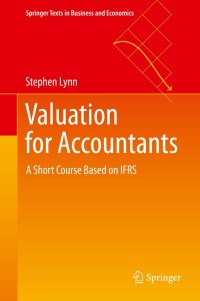Required information [The following information applies to the questions displayed below.) Warnerwoods Company uses a perpetual inventory system, It entered into the following purchases and sales transactions for March Units Acquired at Cost 180 units 552.60 per unit 265 units $57.60 per unit Date March 1 March 5 March 9 March 18 March 25 March 29 Activities Beginning inventory Purchase Sales Purchase Purchase Sales Totals 125 units 562.60 per unit 230 units $64.60 per unit Units Sold at Retail 340 units @ $87.60 per unit 210 units. $97.60 per unit 550 units 800 units Required: 1. Compute cost of goods available for sale and the number of units available for sale. Cost of Goods Available for Sale # of units Cost per Cost of Goods Unit Available for Sale Beginning inventory Purchases March 5 March 16 March 25 Total 11 12 13 of 15 BE Next > Required information [The following information applies to the questions displayed below) Warnerwoods Company uses a perpetual inventory system. It entered into the following purchases and sales transactions for March Date Activities Units Acquired at Cost March 1 Units Sold at Retail Beginning inventory 188 units @ $52.60 per unit March 5 Purchase 265 units 9 $57.60 per unit March 9 Sales 340 units @ $87.6 per March 18 Purchase 125 units @ $62.60 per unit March 25 Purchase 230 units @ $64.60 per unit March 29 Sales 210 units @ $97.60 per 800 units 550 units Totals 2. Compute the number of units in ending inventory. Ending inventory units Required information [The following information applies to the questions displayed below.) Warnerwoods Company uses a perpetual inventory system. It entered into the following purchases and sales transactions for March Units Sold at Retail Date March 1 March 5 March 9 March 18 March 25 March 29 Activities Beginning inventory Purchase Sales Purchase Purchase Sales Totals Units Acquired at Cost 180 units @ $52.68 per unit 265 units @ $57.68 per unit 125 units @ $62.60 per unit 238 units @ $64.60 per unit 340 units @ $87.60 per unit 8e0 units 210 units @ $97.60 per unit 550 units 4. Compute gross profit earned by the company for each of the four costing methods. For specific identification, units sold include 105 units from beginning inventory, 235 units from the March 5 purchase. 85 units from the March 18 purchase, and 125 units from the March 25 purchase. (Round weighted average cost per unit to two decimals and final answers to nearest whole dollar.) FIFO LIFO Weighted Average Specific ID Gross Margin Sales Less: Cost of goods sold Gross profit Seved Help Required information #of units Cost per unit # of units sold Cost per unit Cost of Goods Sold March 1 #of units Cost per unit $ 52.60 Inventory Balance $ 9,468.00 180 at March 5 Total March 5 March 9 Total March 9 March 18 Total March 18 March 25 Total March 25 March 29 Total March 29 Totals $ 0.00 Permatu Goods Purchased Date Perpetual LIFO: Cost of Goods Sold # of units sold unit Cost of Goods Sold # of units Cost per unit Cost per Inventory Balance Cost per Inventory # of units unit Balance 180 at $ 52.60 = $ 9,468.00 March 1 March 5 Total March 5 March 9 Total March 9 March 18 Total March 18 March 25 Total March 25 March 29 Total March 29 Complete this question by entering your answers in the tabs below. Perpetual FIFO Perpetual LIFO Weighted Average Specific la Compute the cost assigned to ending inventory using weighted average. (Round your average cost per unit to 2 decimal places.) Weighted Average Perpetual Goods Purchased Cost of Goods Sold Inventory Balance Date Cost per # of units # of units Cost per unit sold Cost per unit Cost of Goods Sold of units Inventory Balance unit March 1 180 1 $ 52.60 $ 9,468.00 March 5 Average March 5 March 9 March 18 Average March 18 March 25 Average March 25 March 20 Totals 0.00 MacBook Pro Perpetual FIFO Perpetual LIFO Weighted Average Specific Id Compute the cost assigned to ending inventory using specific identification. For specific identification, units sold include 105 units from begin 5 purchase, 85 units from the March 18 purchase, and 125 units from the March 25 purchase. Specific Identification: Goods Purchased Cost of Goods Sold Date Inventory Balance # of units Cost Goods #of units Cost Cost of Goods per unit Cost Puchased sold #of units Inventory per unit Sold per unit Balance March 1 180 at $ 52.60 $ 9,468 at $ 52.60 $ 0.00 ot $ 52.60 $ 0.00 March 5 265 at $57.60 15,264 at $67.60 at $57.60 March 18 125 at $ 62.60 7,825 at $62.60 0.00 ot $ 62.60 0.00 March 25 230 at $ 64,60 $ 14,858 at $ 64.601 at $64.60 Totals $ 0.00 $ 0.00 Warnerwoods Company uses a perpetual inventory system. It entered into the following purchases and sales transactions for March Units Sold at Retail Date March 1 March 5 March 9 March 18 March 25 March 29 Activities Beginning inventory Purchase Sales Purchase Purchase Sales Totals Units Acquired at Cost 180 units @ $52.60 per unit 265 units @ $57.60 per unit 125 units @ $62.60 per unit 230 units @ $64.60 per unit 340 units @ $87.68 per unit 210 units @ $97.68 per unit 550 units 800 units 4. Compute gross profit earned by the company for each of the four costing methods. For specific identification, units sold include 105 units from beginning inventory, 235 units from the March 5 purchase, 85 units from the March 18 purchase, and 125 units from the March 25 purchase. (Round weighted average cost per unit to two decimals and final answers to nearest whole dollar) Gross Margin FIFO LIFO Weighted Average Specific 10 Sales Less: Cost of goods sold Gross profit














